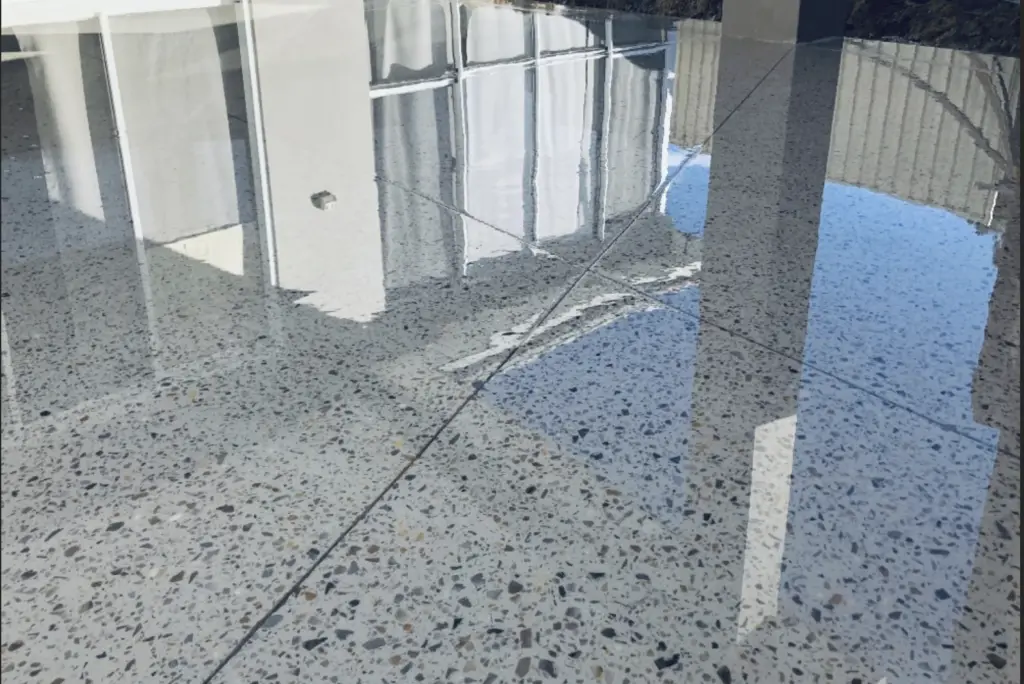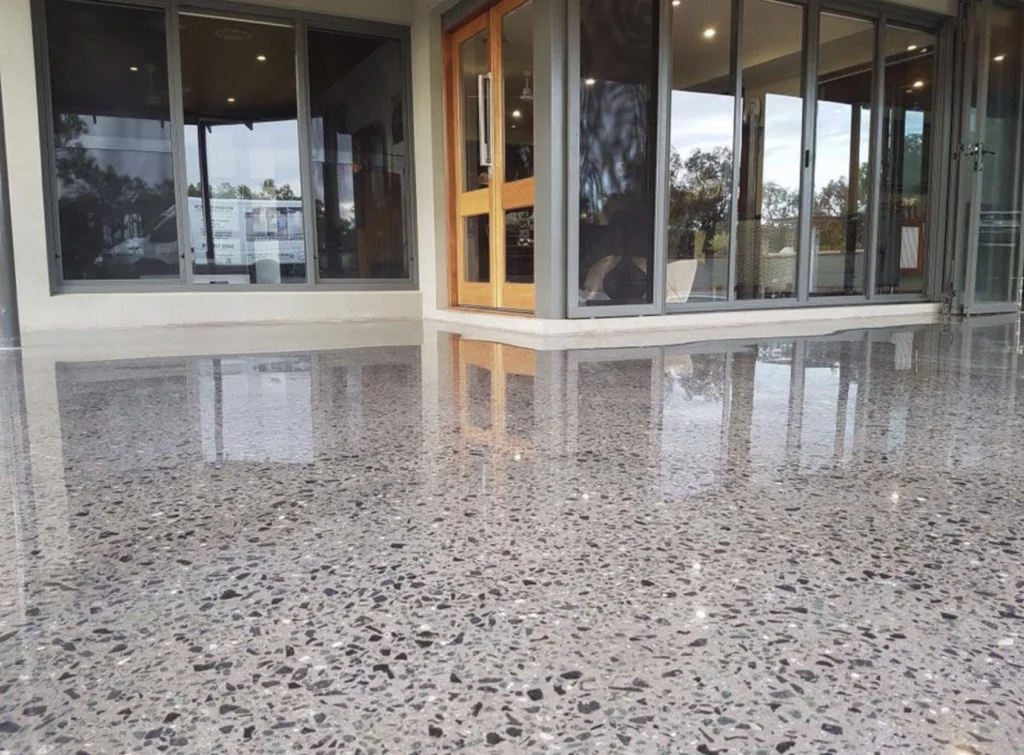Polished aggregate concrete has emerged as a popular choice for both residential and commercial spaces. Whether you’re renovating your home or designing a modern business environment, this material offers a unique blend of durability, style, and cost-effectiveness. But is it the right fit for your specific needs? Let’s dive deep into the features, benefits, and considerations to help you make an informed decision.
What is Polished Aggregate Concrete?
Polished aggregate concrete refers to concrete surfaces that are polished to a high shine, revealing embedded aggregates such as natural stones, glass, or recycled materials. The result is a smooth, aesthetically appealing surface that adds texture and character to any space.
Understanding Polished Aggregate Concrete
The process involves grinding down the surface of concrete to expose the aggregates within, followed by polishing it with specialized equipment to achieve a glossy or matte finish. The key components of this material are the concrete base and the aggregates, which add to the overall appearance.
Types of Aggregates in Polished Concrete
- Natural Stones: Stones like granite, quartz, and marble are often embedded in the concrete to create a unique surface pattern.
- Recycled Materials: Some polished concretes use recycled glass or ceramics, making them an environmentally friendly choice.
- Colored Aggregates: For a more customized look, colored aggregates can be added, offering design versatility.

Advantages of Polished Aggregate Concrete
- Durability: This material is incredibly hard-wearing and can withstand high foot traffic, making it perfect for both homes and businesses.
- Aesthetic Appeal: The polished surface provides a sleek, modern look that complements various interior styles.
- Cost-effectiveness: Once installed, it requires minimal maintenance, reducing long-term expenses.
Environmental Benefits
Polished aggregate concrete is often made using sustainable materials. Recycled aggregates reduce the need for virgin resources, and the polishing process enhances the thermal mass of the material, improving energy efficiency in buildings by regulating indoor temperatures.
Where Can Polished Aggregate Concrete Be Used?

This versatile material can be used in a variety of settings:
- Residential: Floors, countertops, and patios.
- Commercial: Offices, retail spaces, and showrooms, where it offers durability and a high-end appearance.
Design Options with Polished Aggregate Concrete
You can customize the look of polished concrete in several ways:
- Surface finishes: Choose from high-gloss, matte, or satin finishes.
- Aggregate exposure levels: Opt for a subtle finish with minimal aggregate exposure or a bold, textured look by exposing more of the aggregates.
- Color options: Concrete dyes and colored aggregates offer endless design possibilities.
Installation Process of Polished Aggregate Concrete
The process involves multiple stages:
- Preparing the surface: The existing concrete is cleaned and prepped.
- Polishing stages: The concrete is polished using increasingly finer grits to achieve the desired smoothness.
- Sealing the concrete: A sealant is applied to protect the surface and enhance its shine.
Maintenance of Polished Aggregate Concrete
One of the biggest advantages of polished concrete is how easy it is to maintain:
- Cleaning: Regular sweeping and occasional mopping with a neutral cleaner are enough to keep it looking great.
- Re-sealing: To maintain the shine, resealing every few years is recommended.
Comparing Polished Aggregate Concrete to Other Flooring Options

- Tile: While tile offers a variety of design options, polished concrete is more durable and requires less maintenance.
- Wood: Wood may offer warmth, but it is prone to scratches and water damage, unlike polished concrete.
- Epoxy Flooring: Epoxy is durable but doesn’t offer the same level of customization as polished aggregate concrete.
Common Myths about Polished Aggregate Concrete
- Myth: It’s slippery: In reality, polished concrete can be treated with anti-slip coatings.
- Myth: It cracks easily: When installed properly, polished concrete is resistant to cracking and wear.
Cost of Installing Polished Aggregate Concrete
The cost can vary depending on the complexity of the design and the size of the area. While the initial investment may seem higher, its long-term durability and low maintenance make it a cost-effective option in the long run.
Challenges and Drawbacks
- Installation Complexity: The process requires specialized equipment and professionals.
- Initial Cost: Though cost-effective over time, the initial installation can be pricey.
Is Polished Aggregate Concrete Right for Your Home?
Consider factors such as location, usage, and your personal style preferences. If you’re looking for a modern, durable, and low-maintenance surface, polished aggregate concrete could be the ideal solution for you.
Conclusion
Polished aggregate concrete offers a fantastic combination of aesthetics, durability, and sustainability. Whether you’re upgrading your home or designing a business space, this material provides an elegant yet functional solution. With its ability to withstand wear and tear while maintaining its sleek appearance, polished aggregate concrete is worth considering for your next renovation project.
Is polished aggregate concrete difficult to maintain?
No, it’s very low-maintenance, requiring only occasional cleaning and resealing.
Can polished concrete be used outdoors?
Yes, it’s durable enough for outdoor patios and walkways.
How long does polished aggregate concrete last?
With proper care, it can last decades without needing replacement.
Is polished concrete eco-friendly?
Yes, especially if recycled aggregates are used in its construction.
How much does it cost to install polished aggregate concrete?
The cost varies but is typically more affordable in the long run due to its durability and low maintenance.
